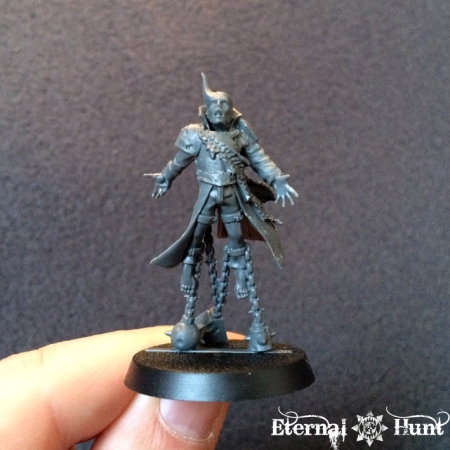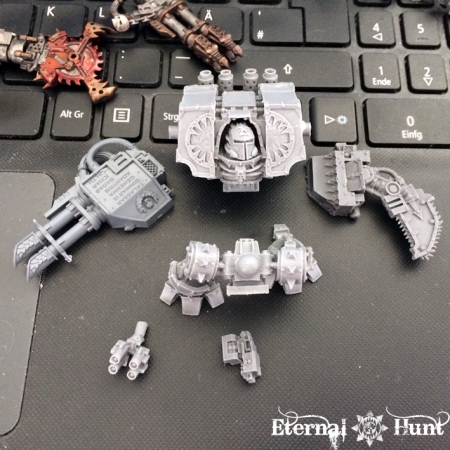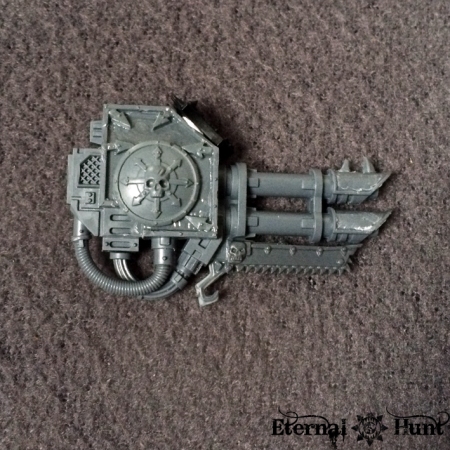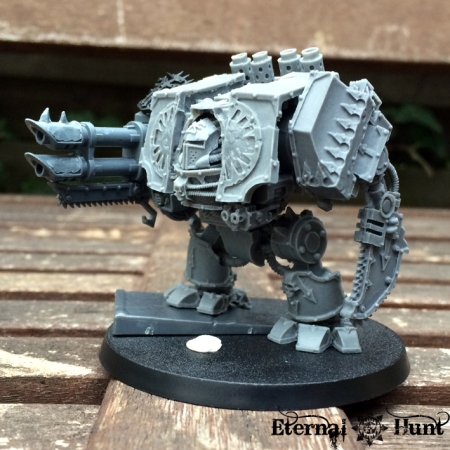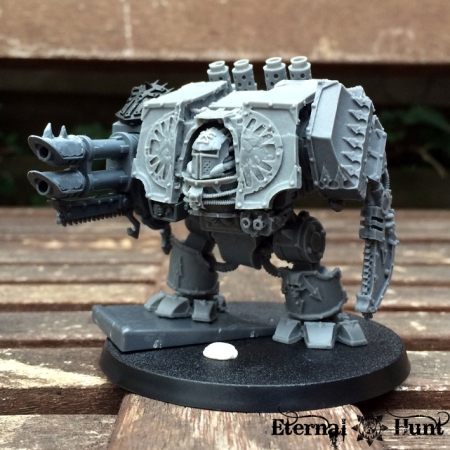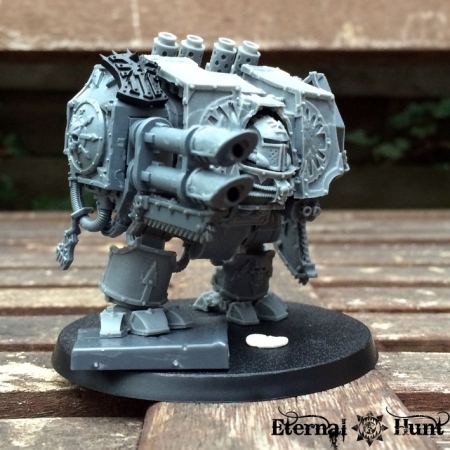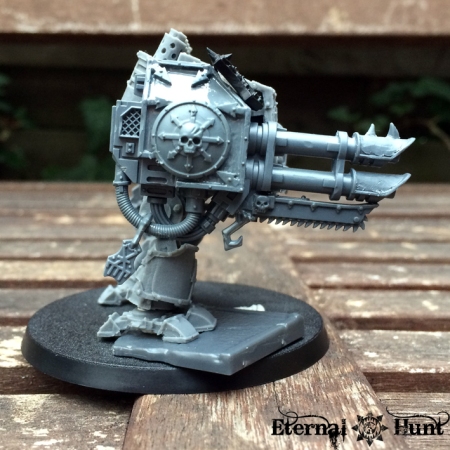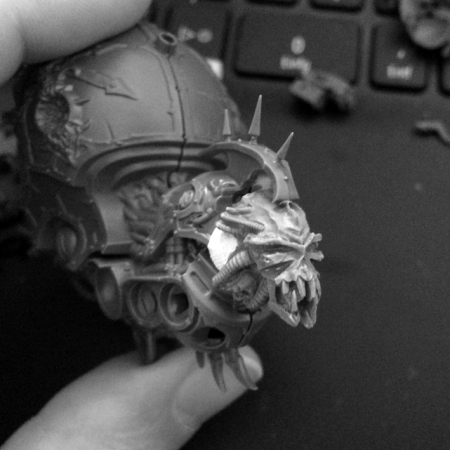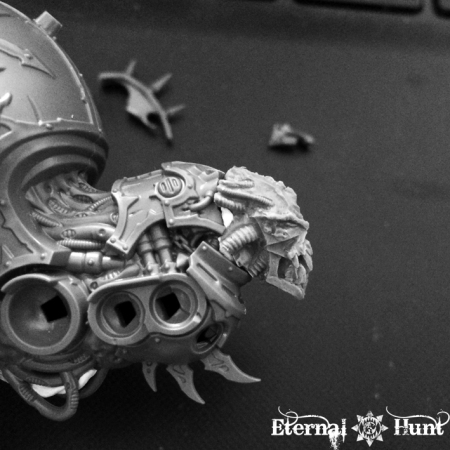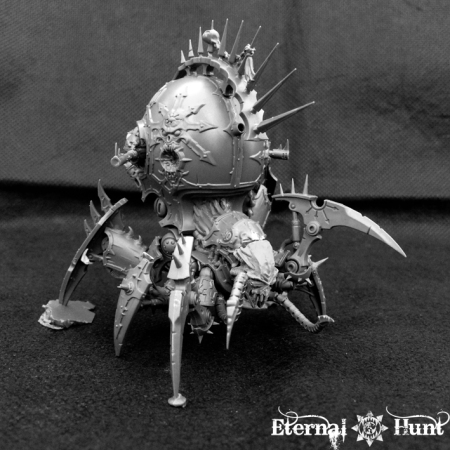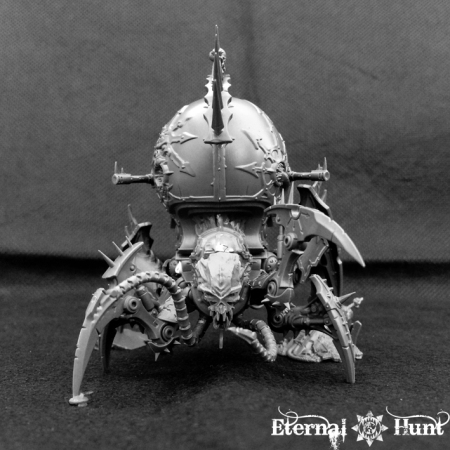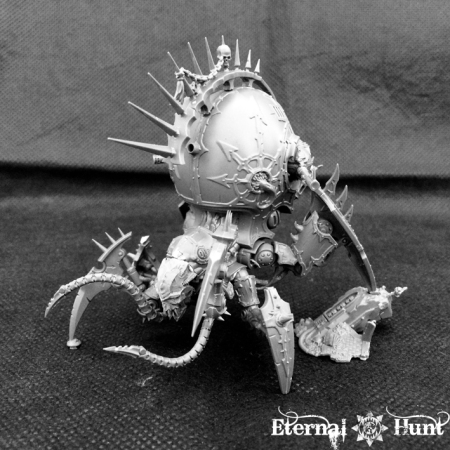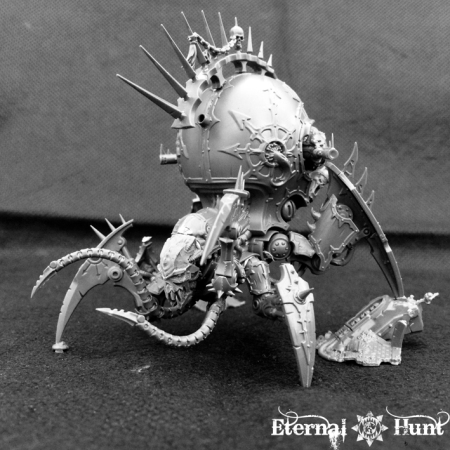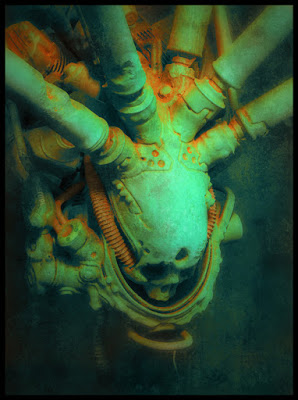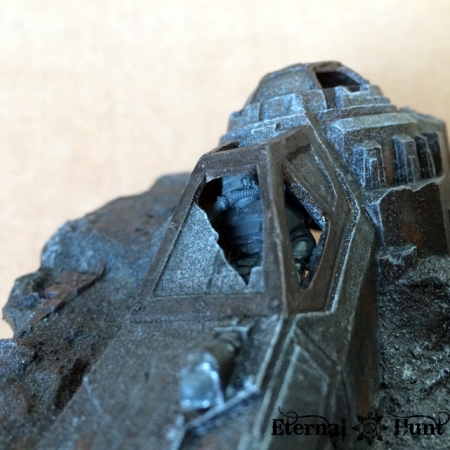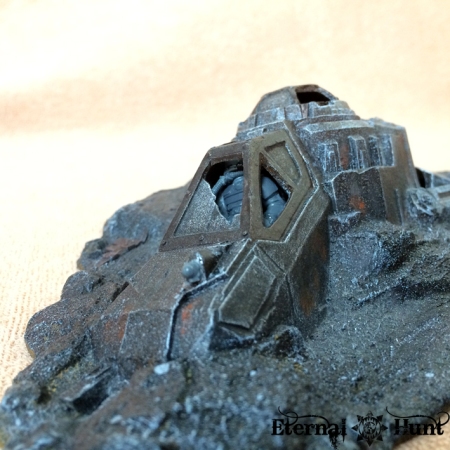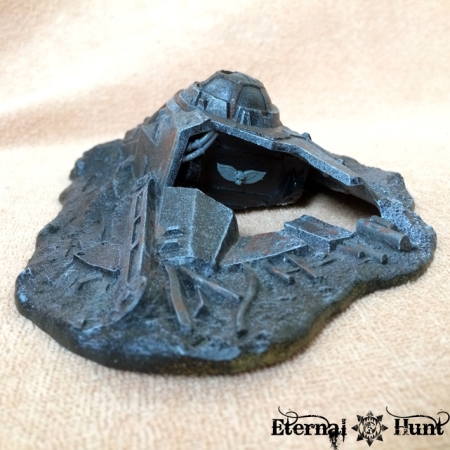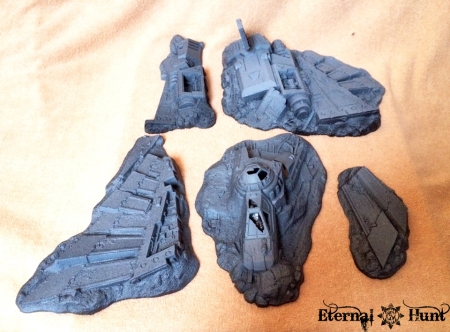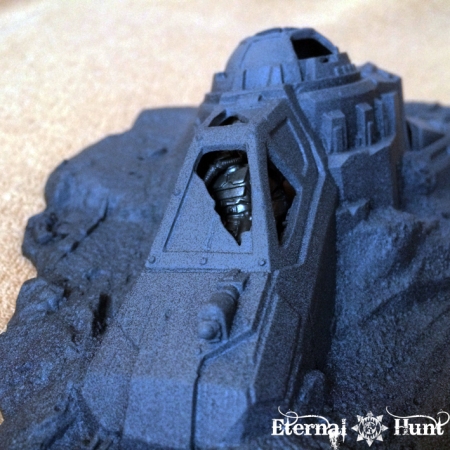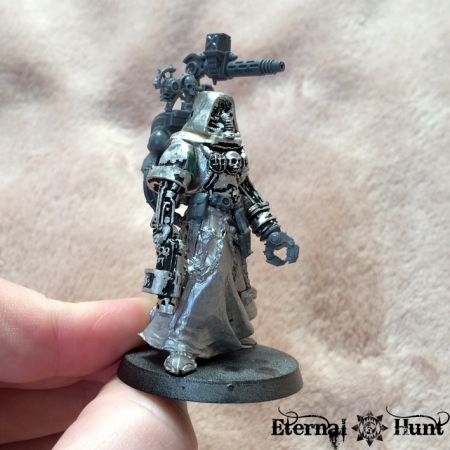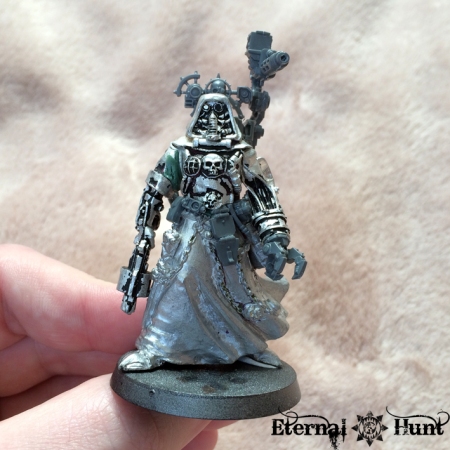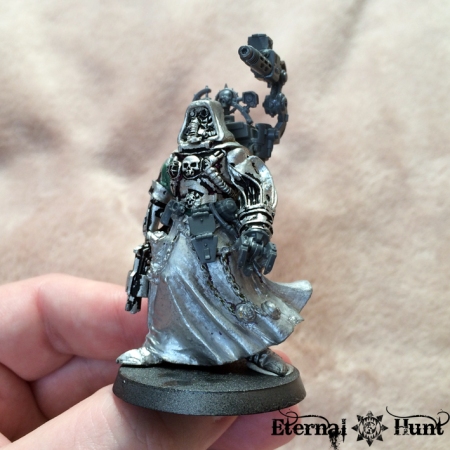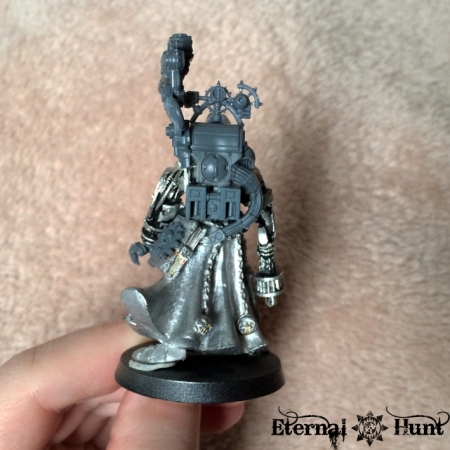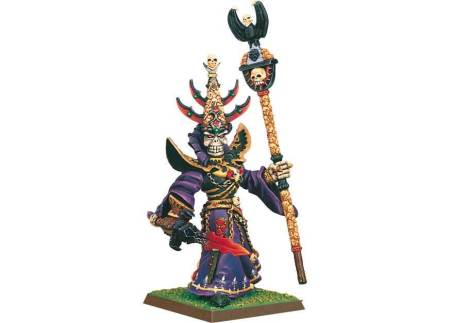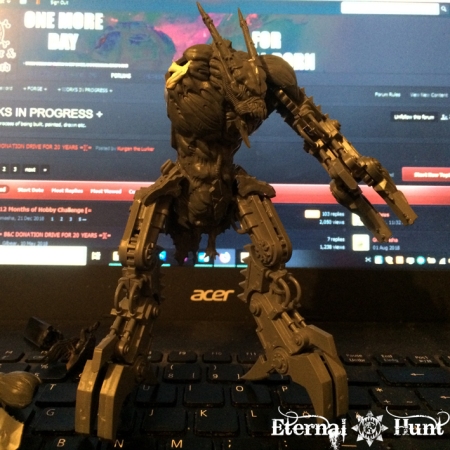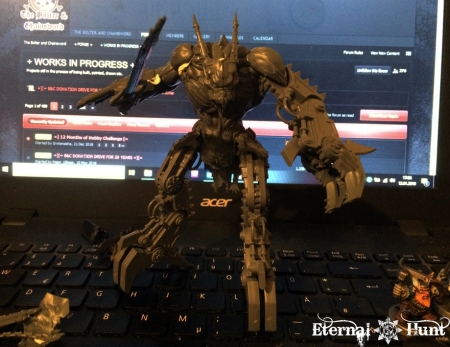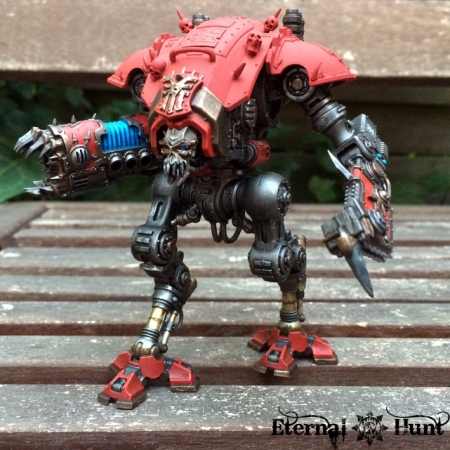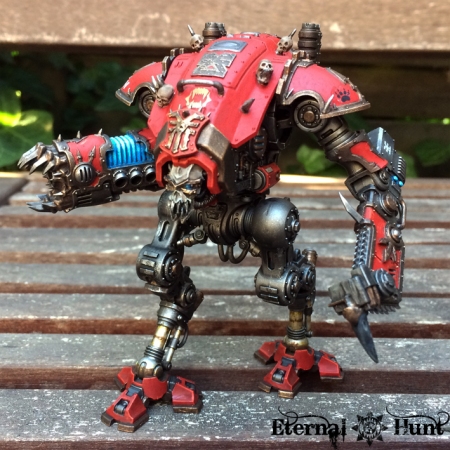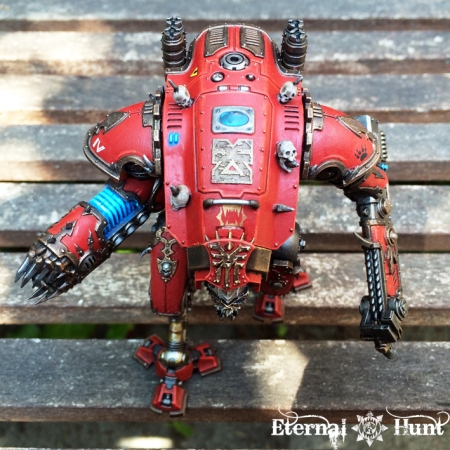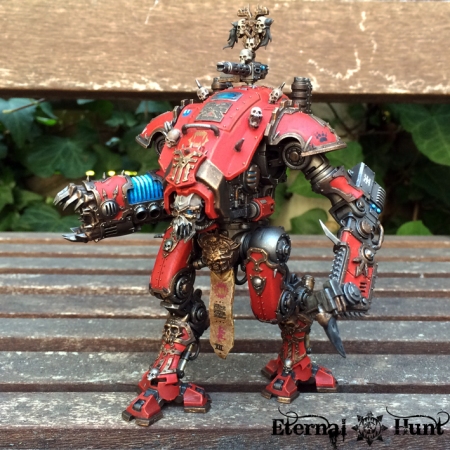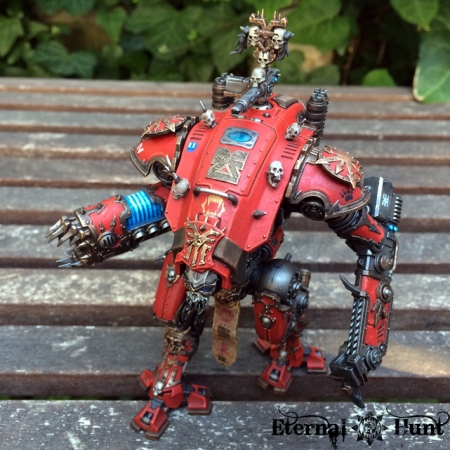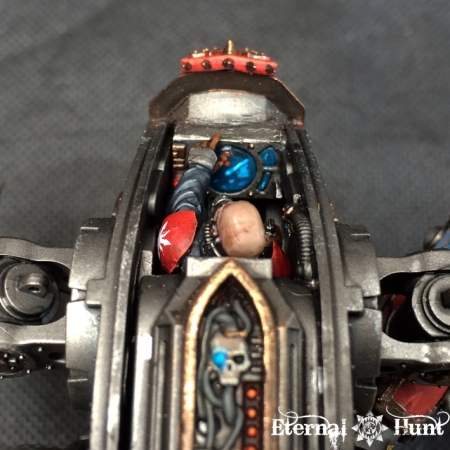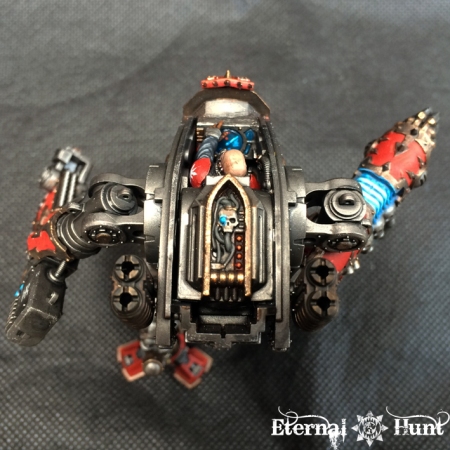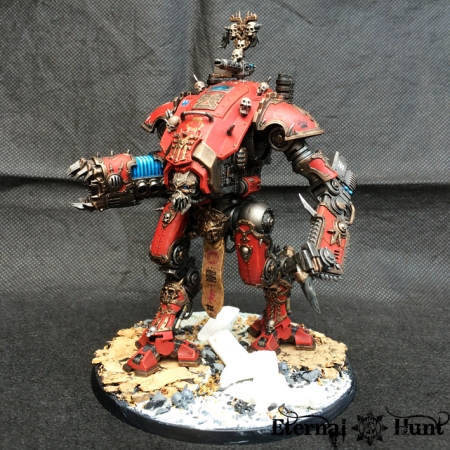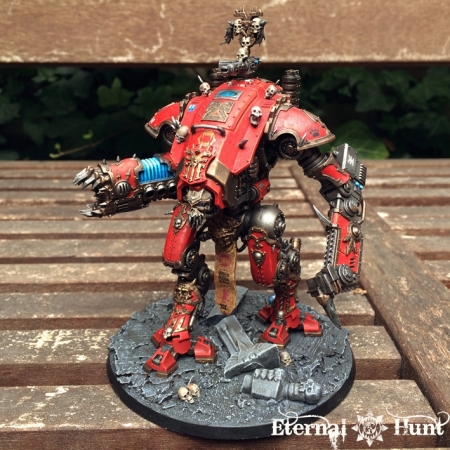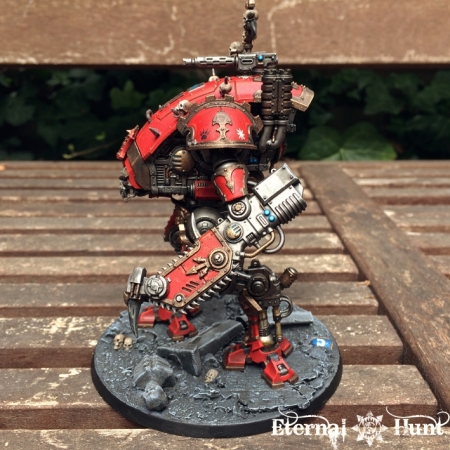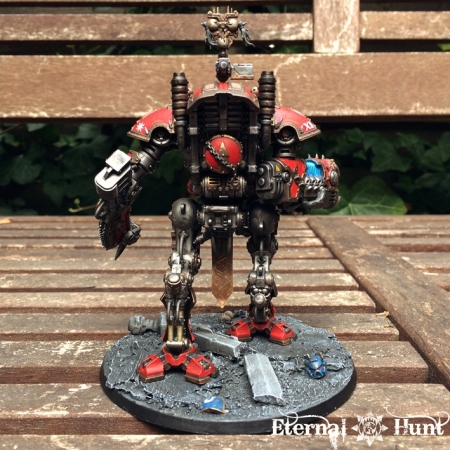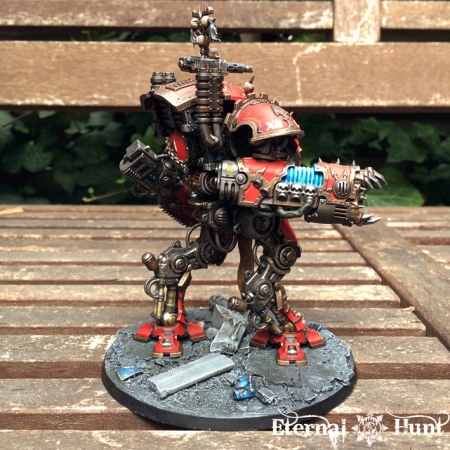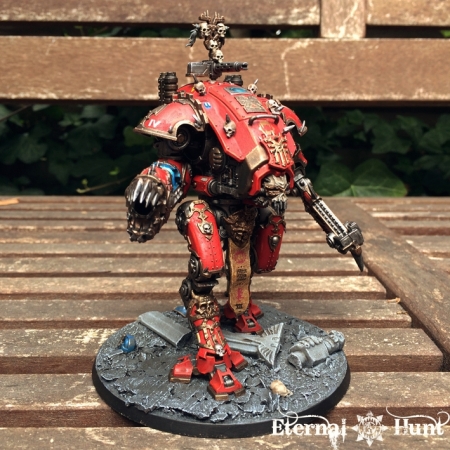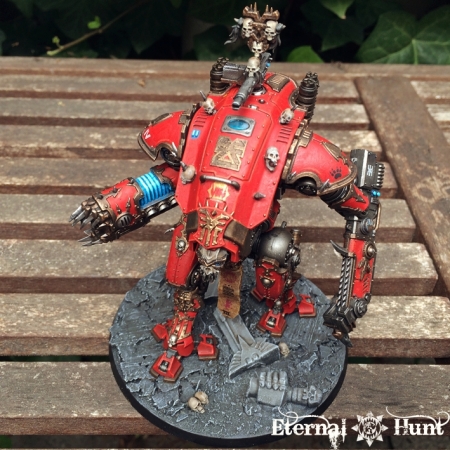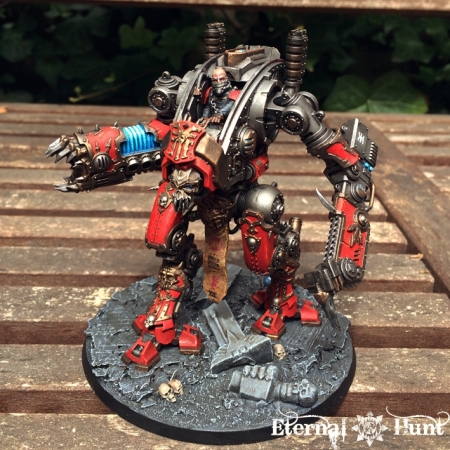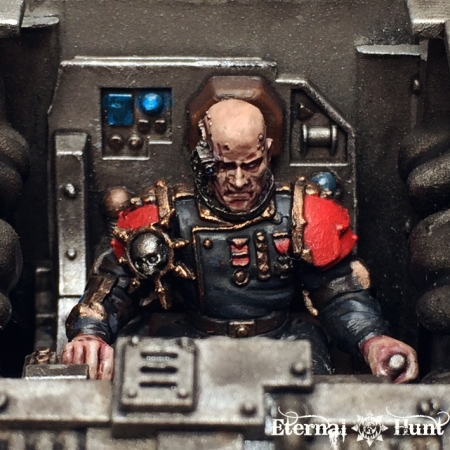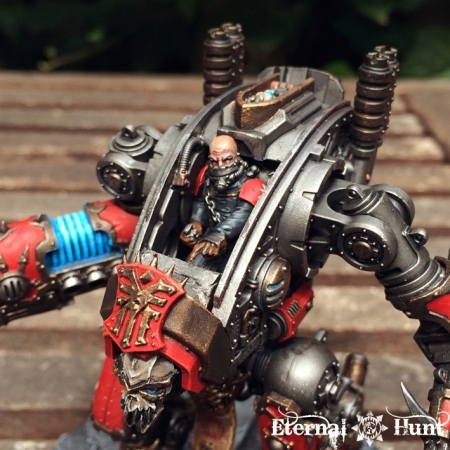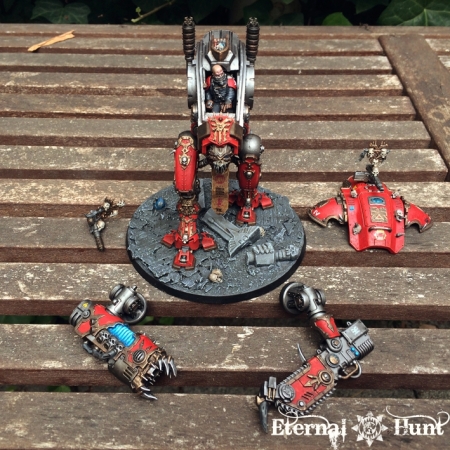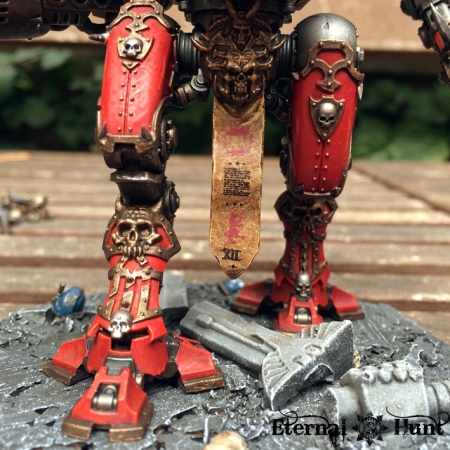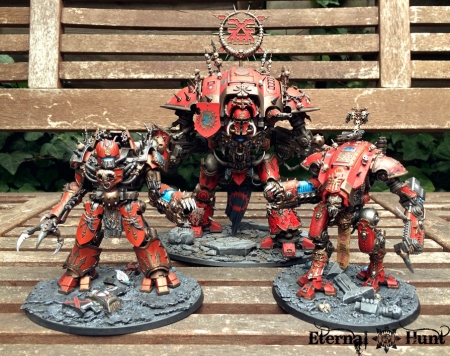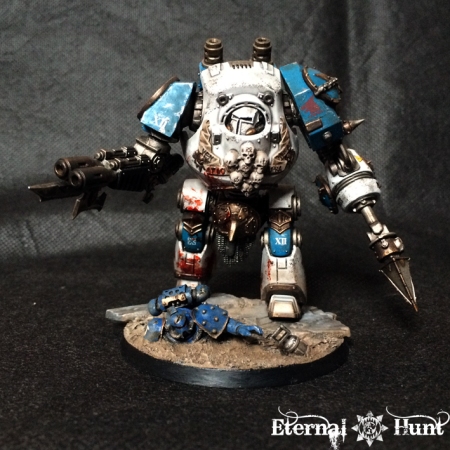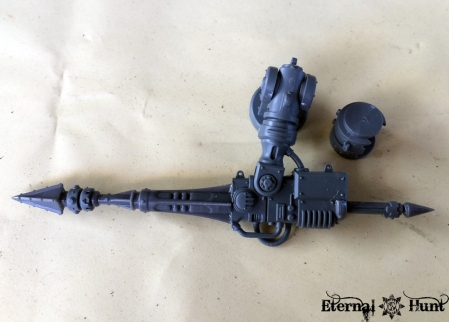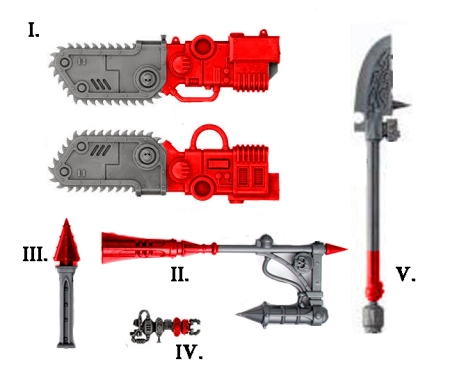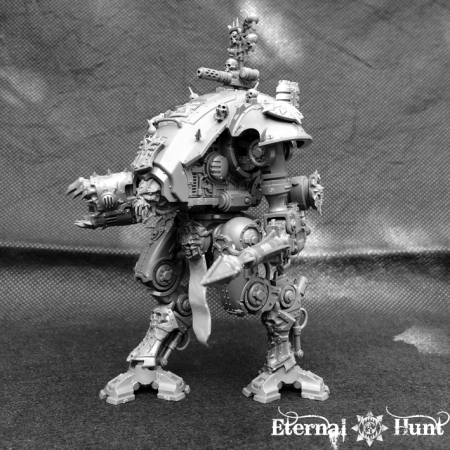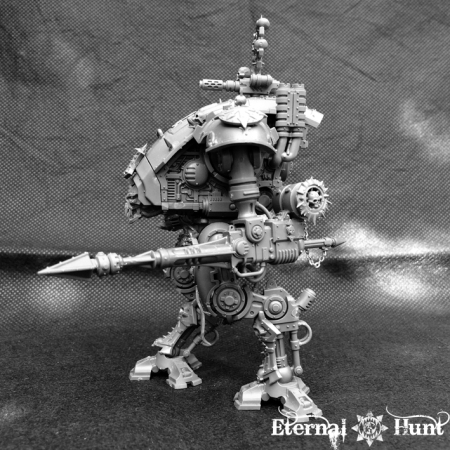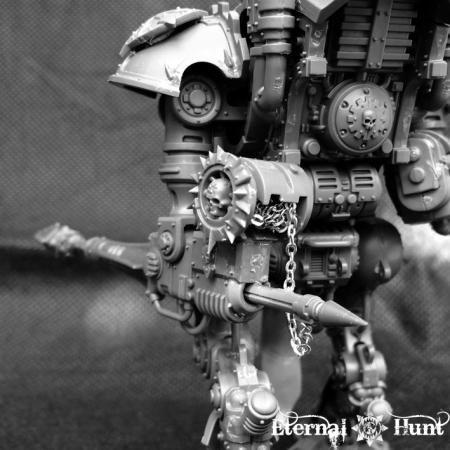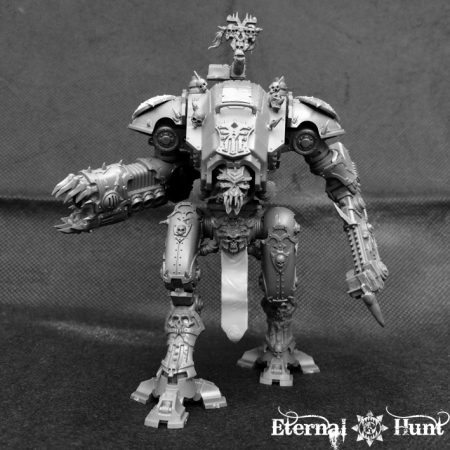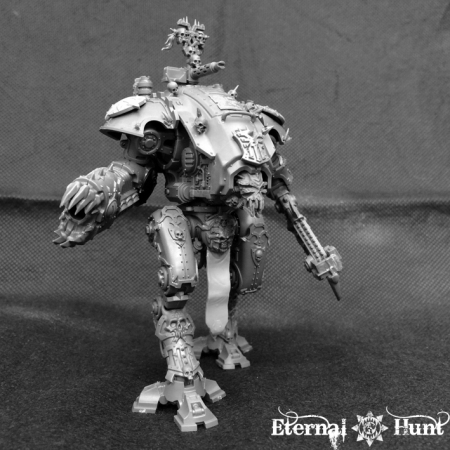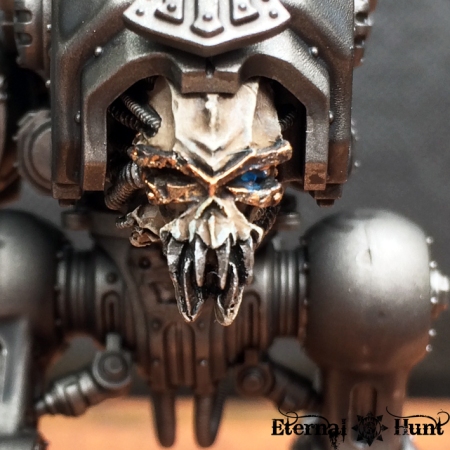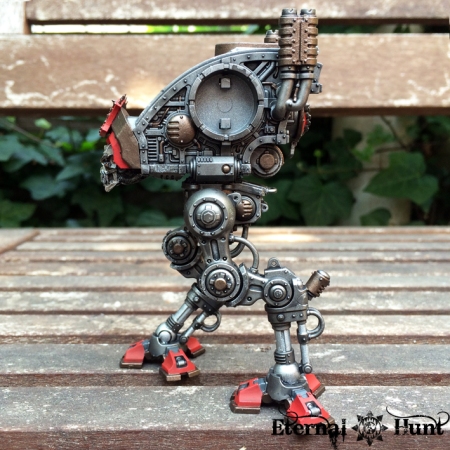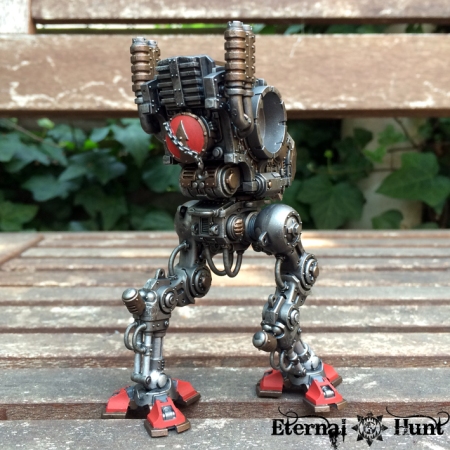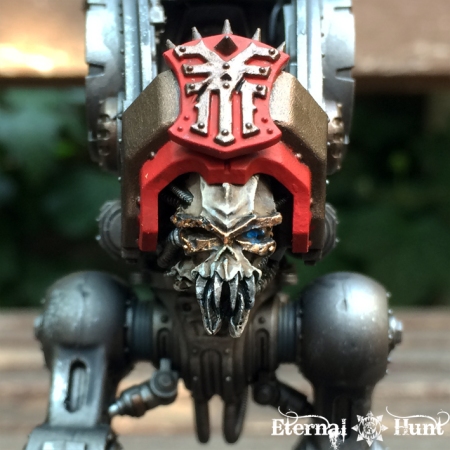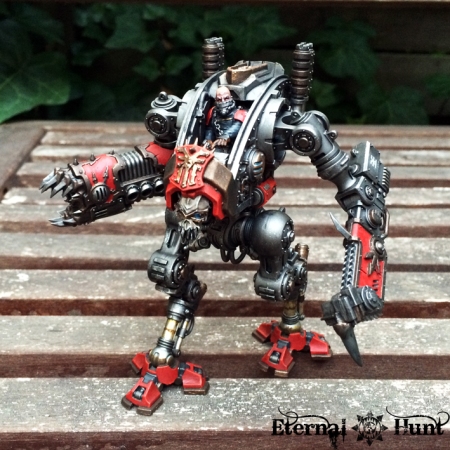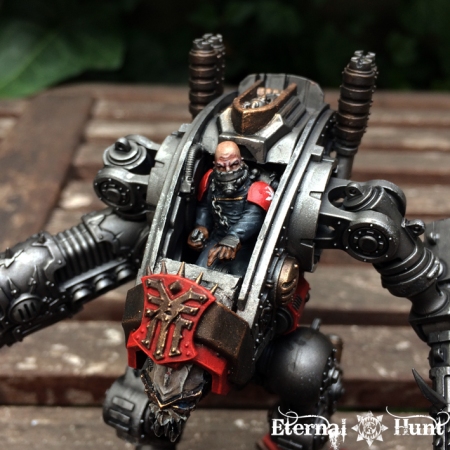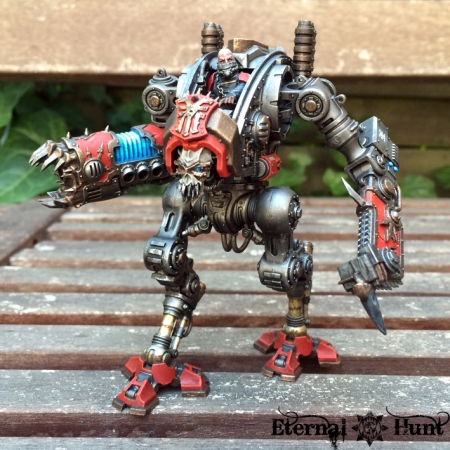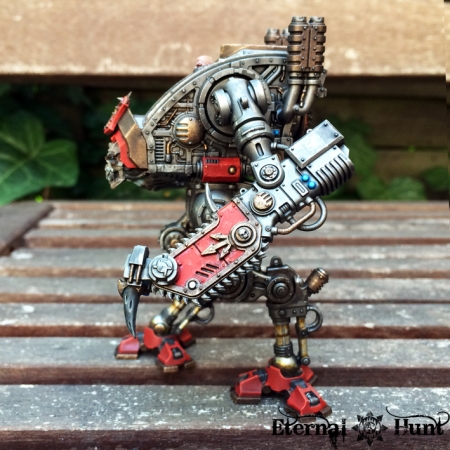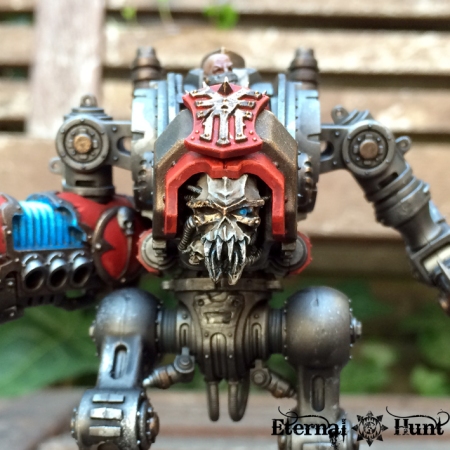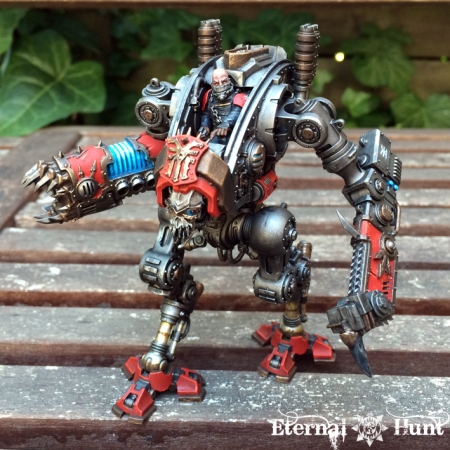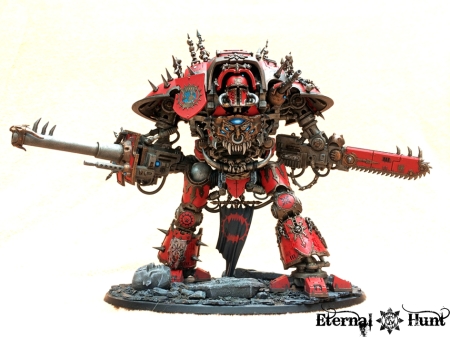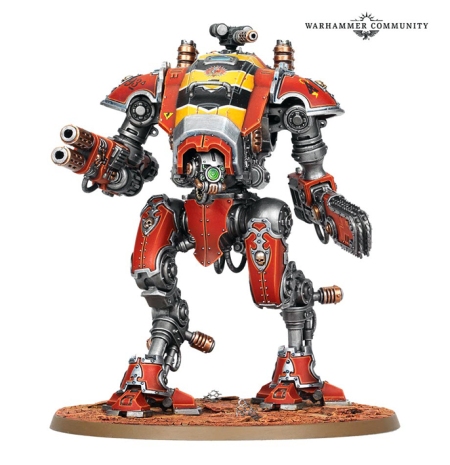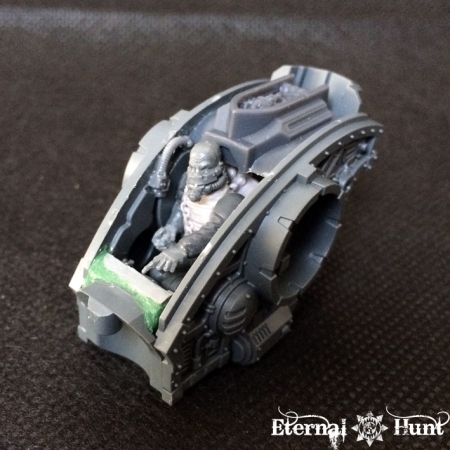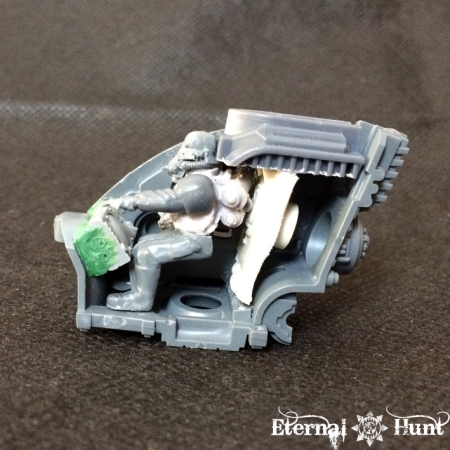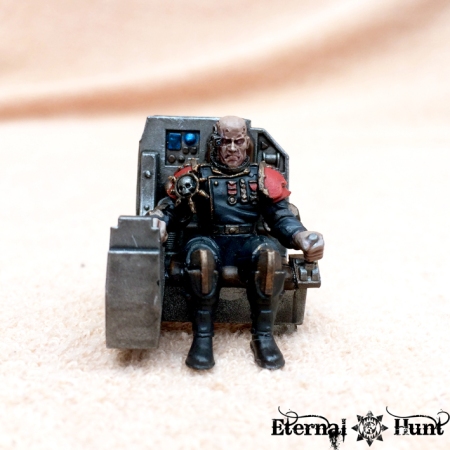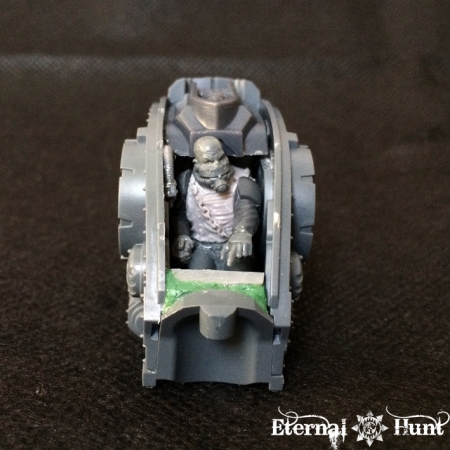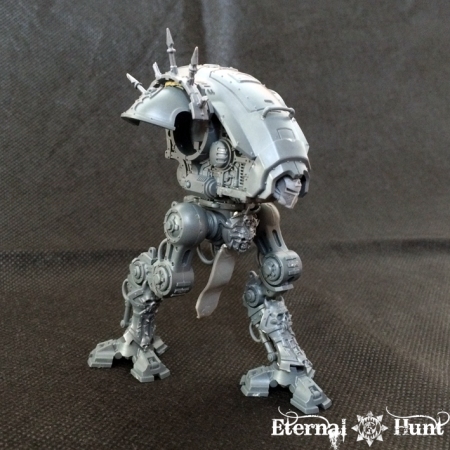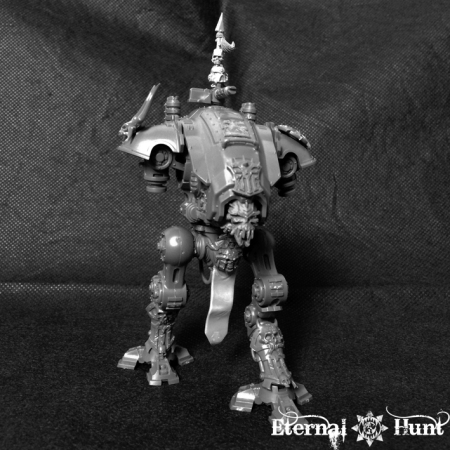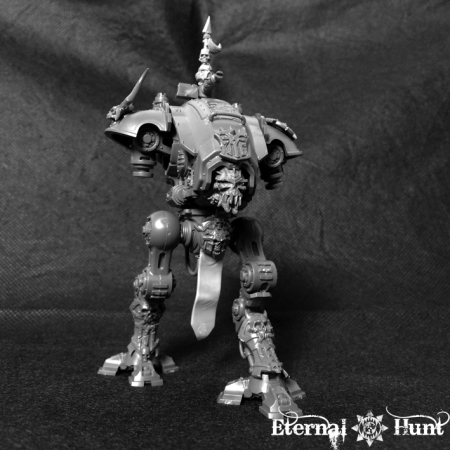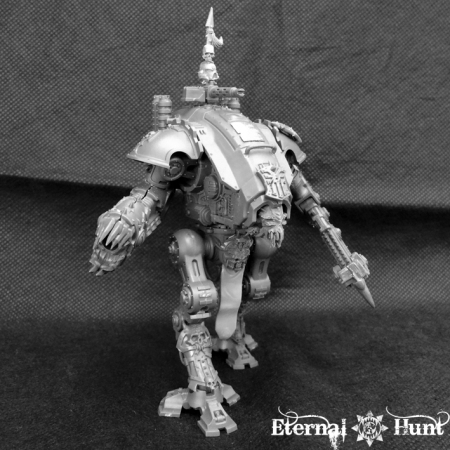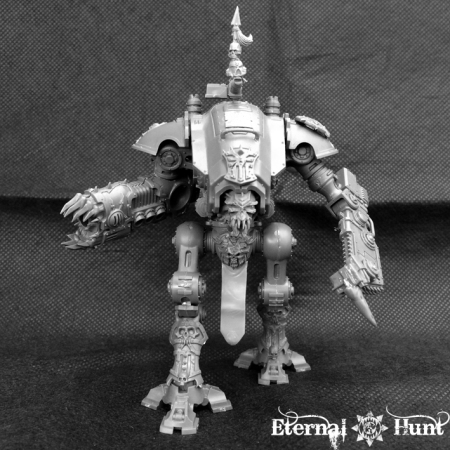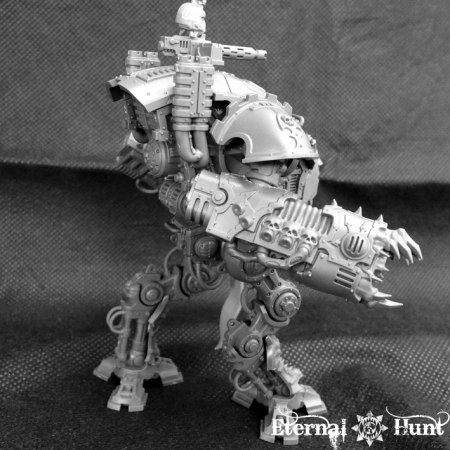So, something unrelated to my #HeroQuest2019 project for today’s update — don’t worry, though, work on my HeroQuest models continues apace! However, with all of those incredible new Chaos Space Marine models hitting the shelves, I felt the need for just a wee little bit of chaotic kitbashing — indeed the irony of all of those models finally arriving just when I happen to have taken a bit of a hiatus from 40k has not escaped me…
For now I have mostly resisted the lure of the new kits — or of the Shadowspear boxed set, for that matter: While I basically love everything I have seen so far, I can simply not justify dropping over a hundred Euros on yet another box that would remain unpainted for the foreseeable future. But I do have my ways, and so a recent bitz delivery has provided me with the raw material for some smaller experiments. So let us take a look, shall we…?
I. The Host
Let’s start with what’s probably the least impressive offering for today, albeit one that I am nevertheless pretty happy with: Ever since first laying eyes on those rogue psykers that came with Blackstone Fortress, I have felt the need to use one of them to create a Daemonhost (most likely for use in INQ28): There’s just something about the chains and weighing down the psyker’s floating body that really recalls the Daemonhost aesthetics originally introduced by the 54mm version of Inquisitor — plus I have been saving that perfect Daemonhost head (originally from the Hellstriders of Slaanesh) for such a conversion. So anyway, here’s what I have made:
As you can see, it’s a pretty straightforward conversion: I have mostly just replaced one of the arms and the head, and have also shaved off most of the openly chaotic decoration. I still think the changes have nicely tweaked the general look and feel of the model — just a few purity seals and imperial doodads, and this poor wretched soul is ready for grueling servitude in an inquisitorial retinue (probably of the Ordo Malleus flavour, come to think of it).
This was, however, merely the warmup:
II. Don’t look a gift Dread in the mouth…
The second model I would like to share with you has been a long time coming: Back when I visited fellow hobbyist Augustus b’Raass in Amsterdam in 2017, he was generous enough to present me not only with a pile of conversion bitz, but also with one of the old Forgeworld World Eaters Dreadnoughts:

Now I have a fond personal history with those FW Dreadnoughts, because they were my first proper contact with Forgeworld to begin with: Back when I saw those, I remember being utterly blown away with the sheer quality of the sculpts — and there was one for each Traitor Legion, mind you! And all of this at a time where the Traitor Legions didn’t exactly get all that much love from GW proper.
Alas, I never purchased one of the Dreads, and when they went OOP a while ago, I was quietly furious at myself at passing the opportunity to have the World Eaters one in my collection — an oversight that Augustus remedied by way of his wonderful gift.
But I am nothing if not a hobby butterfly, so it took me ages to finally start working on the Dreadnought — I was also missing some proper arms for him, in my defense. But when Augustus recently sent me a wonderful squad of World Eaters, he also included a chaos Dread CC arm in the package, and I definitely got the message: I would have to get the hell off my arse and build that Dreadnought, at long last!
So only one bitz delivery later, I had everything I needed for the model:
So here’s a look at the initial mockup of the Dreadnought:
Most work went into turning that squeaky clean Venerable Dreadnought lascannon arm into a suitably chaotic version that matches the general look of the model. Here’s a closer look at the – mostly finished – gun arm:

I chose the Lascannon, mostly for the visual balance created by those longer barrels. When it came to making it look suitably chaotic, I worked from Forgeworld’s “official” design, trying to match several of the visual cues present in the sculpt, while also putting a small personal spin on things here and there. So here’s a look at Forgeworld’s version:
And here’s the – mostly finished – Lascannon arm I came up with:
There’s also an additional cool little special effect in place here: I decided to base his gun arm on one of the weapons from the Venerable Dreadnought kit in order to be able to keep the arm modular, so that it will accept alternate guns and can make use of the additional weapons I already built back when I converted my first Venerable Dreadnought.
Beyond the arm, I only added one or two bitz to the rest of the model, not wanting to overpower what I think is a brilliant sculpt overall. So here’s a look at the completely built model, already in the intended pose, leaning into its next shot:
Only some cleanup and the base design left, and then I hope I can finally do this guy justice. Wish me luck! 🙂
III. Step into my parlour…
So is that all? Welll, when I said that I had resisted the lure of Shadowspear so far, I may not have been entirely honest with you…
So there’s also this:
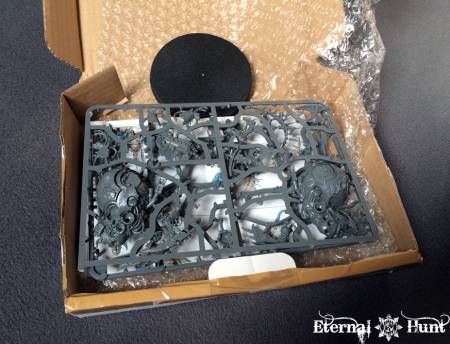
As some of you may have already realised, those are the sprues for the Chaos Venom Crawler, the daemon engine included with the Shadowspear boxed set:
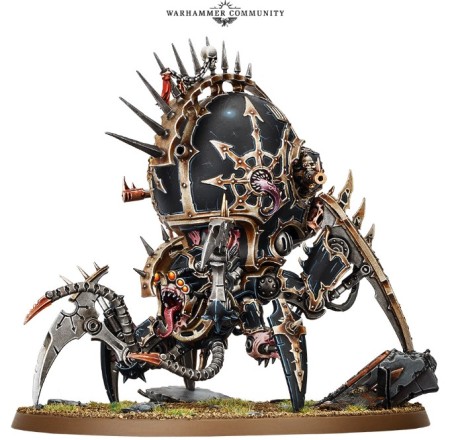
I simply had to get my hands on one of those, as there is just so much about the model that I love: It’s a freaking monster spider from hell, for one. I also love how it has all those shared visual cues with various daemon engines: You’ll find little touches from the juggernauts, the Heldrake or the Forgefiend/Maulerfiend all over the creature’s jagged carapace. I love how lithe and deadly it looks (where some of those older daemon engines were a bit clunky). Anyway, I needed one to play around with a bit, so there.
For all my love of the model, however, there was one area that I thoroughly disliked: The head. It was just a bit too weird for my taste (and not the good kind of weird, at that). And it definitely lacked that certain (Khornate) je-ne-sais-quoi. But I felt I had just the idea for that…
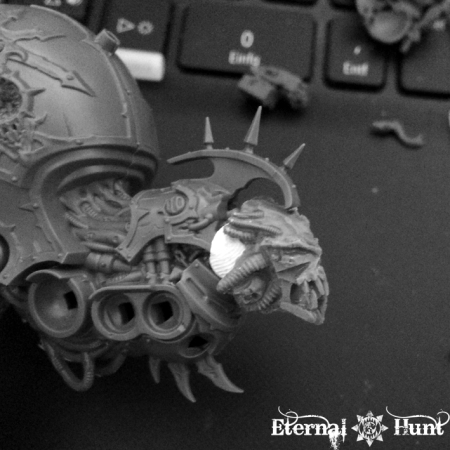
A head from the Blood-Slaughterer Impaler, carefully cut down to fit into the carapace. Of course with the first attempt, I was still trying to find my feet, getting the placement right while still keeping that spiked crest in place, just in case I didn’t want to commit to this solution.
It quickly became clear to me that this was the way to go, however, and that getting the head to look right would mostly consist of shaving down the neck portion until it fit just so. So I did just that, and the reszlts ended up looking better and better:

In case anyone was wondering about the scale of the model, by the way: Here’s a comparison picture with the Venom Crawler next to a Myphitic Blighthauler:
I can only commend whoever planned out the way this model should be assembled for an excellent job! It goes together like a dream, and the legs can be easily left off to have an easier time during the painting stage — excellent craftsmanship, this one! At the same time, the finished model looks far more delicate and complex than the relatively few parts would suggest. As for my replacement head, I kept shaving, millimetre by millimetre…
And after a few more sessions, I think I have the perfect setup:
Of course the seam between both parts still needs a bit of cleanup, some additional cabling etc. — but I think the head works really well like that. In case anybody else is considering a headswap on this beast, let me just say that a Armiger head would be a perfect fit (and the cyclopean one makes for an excellent, sinister Dark Mechanicum look) — just sayin’ 😉
IV. A shout out in closing…
While you may actually have seen this elsewhere, just to be on the safe side: The first issue of 28 MAGAZINE, a free digital mag dealing with the wonderful world of INQ28 (and AoS28, for that matter) has been out for a while now, and you should definitely check it out and immediately download it here. It is the most extraordinary thing.
So that’s it for today’s update. If you have any thoughts about my small chaotic projects, I would of course be delighted to hear them! And, as always, thanks for looking and stay tuned for more! 🙂
